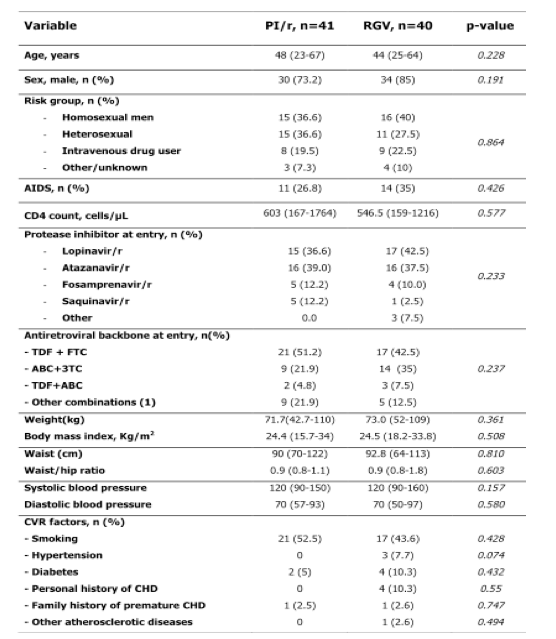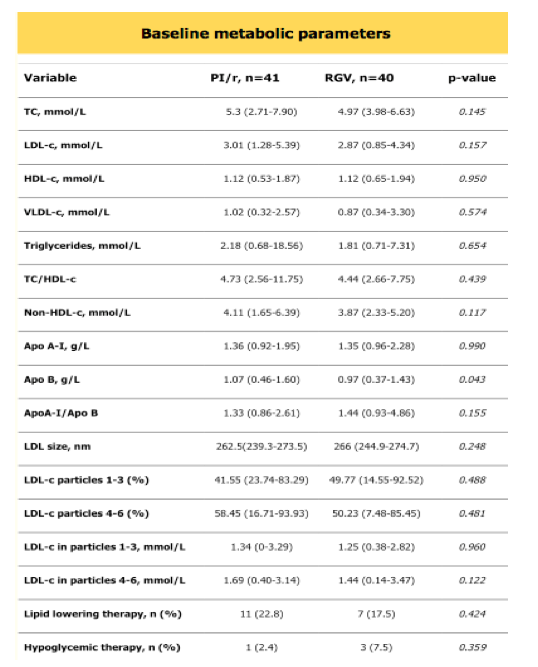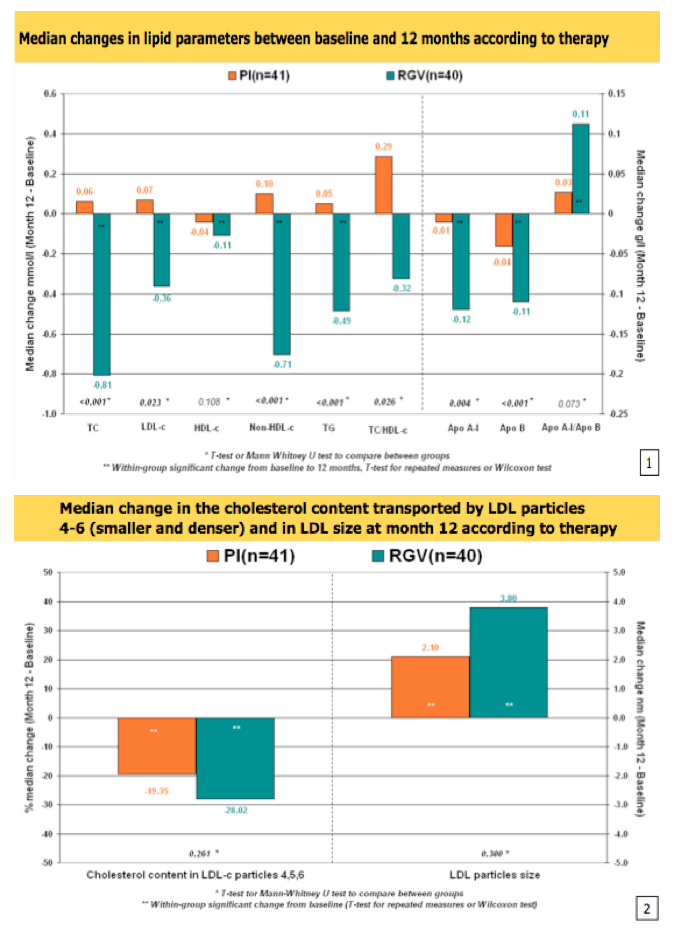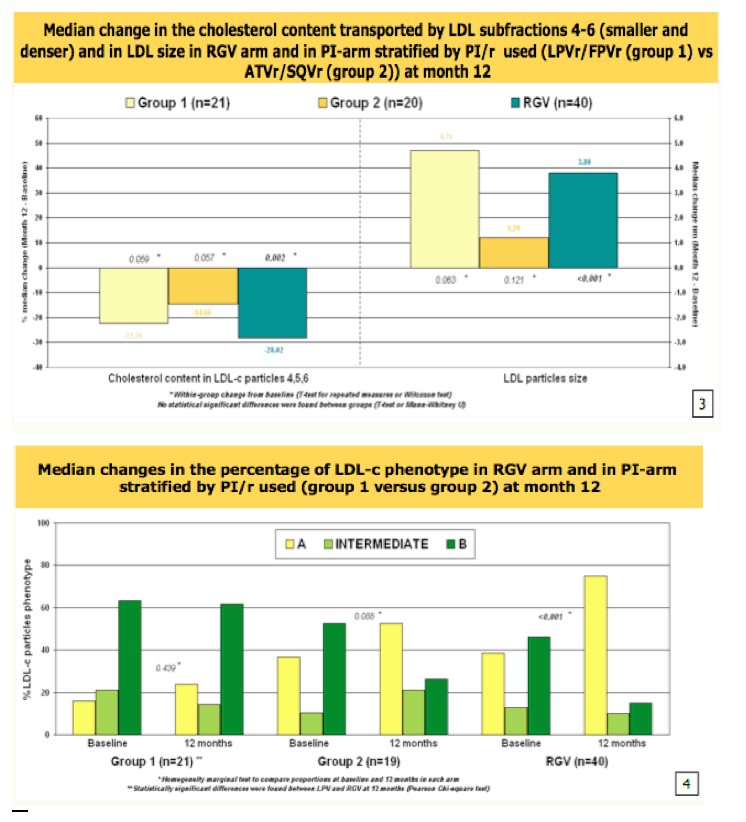 |
 |
 |
| |
COMPREHENSIVE LIPID EVALUATION IN PATIENTS SWITCHING FROM RITONAVIR BOOSTED PROTEASE INHIBITOR (PI/r)-BASED TO RALTEGRAVIR-BASED ANTIRETROVIRAL THERAPY: THE SPIRAL-met SUBSTUDY
|
| |
| |
Reported by Jules Levin CROI 2011 Boston Feb 27-March 2
M. Saumoy*1, J. Ordo–ez2, E. Martinez3, J.M. Llibre4, E. Ribera5, H. Knobel6, D. Podzamczer1
1Hospital Bellvitge, 2 Hospital Sant Pau, 3Hospital Cl’nic, 4Hospital Can Ruti, 5Hospital Vall dŐHebron, 6Hospital del Mar. Barcelona, Spain
AUTHOR CONCLUSIONS
1- Switching a PI/r-based to a RGV-based ART in otherwise stable, healthy HIV-infected patients was associated with an improvement in standard quantitative lipid parameters.
2- A shift to a less atherogenic LDL profile (decrease in cholesterol content in sdLDL particles and a increase in LDL size, and in the percentage of the less atherogenic LDL phenotype (phenotype A)) was observed in RGV arm.
3- Among patients that continued with PI/r, quantitative lipid parameters remained stable. The predominance of the more atherogenic LDL phenotype (phenotype B) did not change, mainly in patients treated with LPVr or FPVr. However, some improvement in the atherogenic properties of LDL particles was detected.
Background & Objectives
Small and dense LDL particles (sd-LDL) have proinflammatory and proatherogenic properties. Its evaluation can improve cardiovascular risk assessment. Raltegravir (RGV) has shown a good lipid profile both in na•ve and in switching studies.
The objective of the study was to analyze the effect of switching the PI of a stable HAART regimen to RGV, on standard lipid measurements and on LDL particles.
Patients & Methods
Design: Spiral-met is a substudy of Spiral study, a randomized, open label and multicenter trial. Five Spanish hospitals participate in the substudy.
Patients: >18 years; stable antiretroviral (ARV) regimen containing a ritonavir-boosted PI (PI/r) plus two ARV agents other than PI; plasma HIV-1 RNA <50 copies/mL for at least the previous 6 months. Patients were centrally randomized 1:1 to switch to RGV or to continue on the PI/r while maintaining the same background therapy.
Primary endpoint: Change in lipid parameters, particularly in the size and cholesterol content of LDL-c particles in the two arms after 12 months of treatment.
Variables analyzed: Clinical assessment and laboratory evaluations were performed at baseline and after 12 months on the assigned therapy. Laboratory: Total cholesterol (TC), triglyceride (TG), apolipoproteins A-I (apo A-I) and B (apo B), low density lipoprotein-cholesterol (LDL-c) and high density lipoprotein-cholesterol (HDL-c) were analyzed. LDL size was measured by gel electrophoresis in 3% polyacrylamide using a commercial system (Lipoprint, Quantimetrix Co., Redondo Beach, CA). The same method was used to separate 9 LDL subfractions (LDL1 to 9) and evaluate their respective cholesterol content. LDL subfractions were divided into 2 main subgroups: LDL 1 to 3, corresponding to large, buoyant LDL, and LDL 4 to 6, representing the smaller, denser LDL fractions (sd-LDL). PI were grouped into 2 groups based on lipid profile: group 1 included lopinavir/r and fosamprenavir/r and group 2 included atazanavir/r and saquinavir/r.
Statistical analysis: . The Student-t test or Mann-Whitney U tests were used to compare continuous variables between arms. Qualitative variables were compared using the chi-square or Fisher exact test. Comparisons between baseline and follow-up in each arm were carried out with the paired t-test or Wilcoxon signed rank test. Continuous variables are expressed as the median (minimum-maximum).
Baseline Characteristics




|
| |
|
 |
 |
|
|